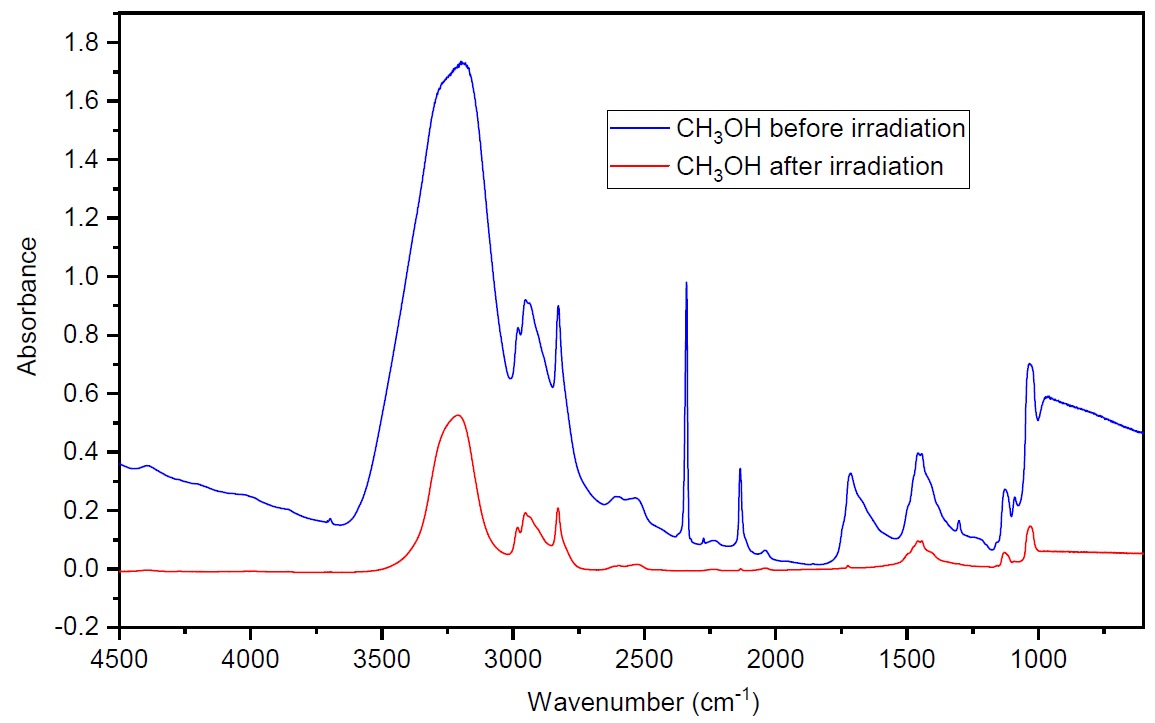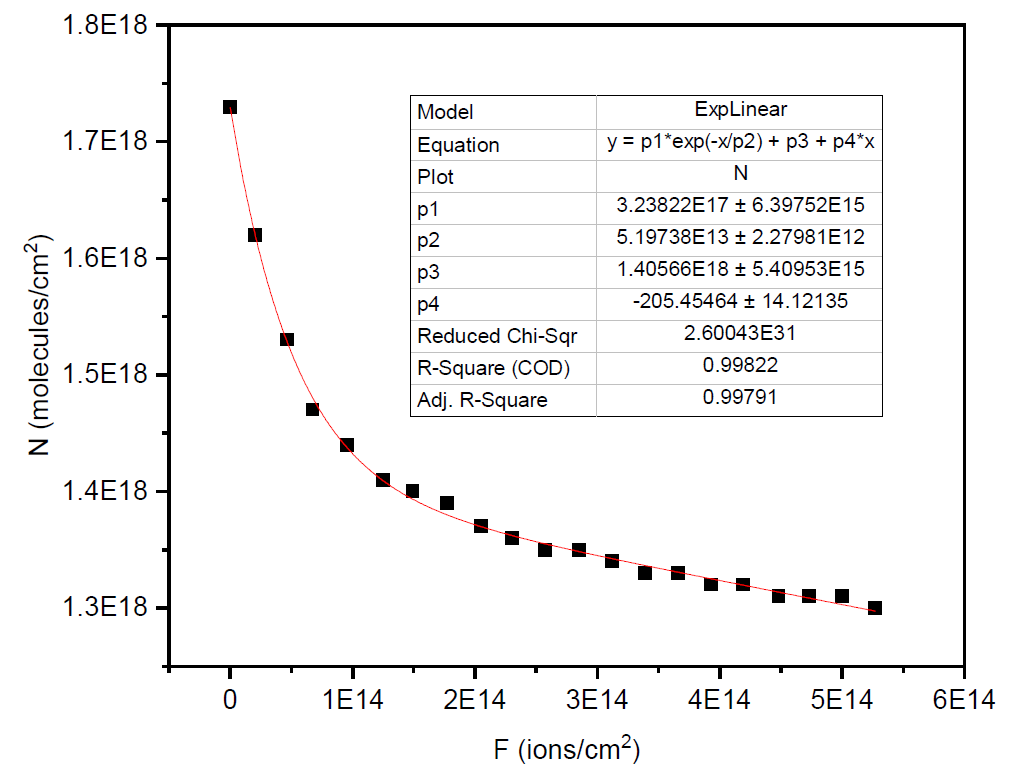Irradiation of CH3OH ices with a sulfur ion beam: implications for Europa’s surface organics
- 1Aix Marseille Univ., CNRS, Institut Origines, PIIM, Marseille, France.
- 2Aix Marseille Univ., CNRS, CNES, Institut Origines, LAM, Marseille, France.
- 3Institute for Nuclear Research (HUN-REN ATOMKI), Debrecen H-4026, PO Box 51, Hungary.
Context. Europa, similar to the other Galilean Moons, is constantly being bombarded by energetic particles coming from Jupiter’s magnetosphere. This energetic bombardment would inevitably alter the organic species that could be on Europa’s surface, whether exogenic or coming from the internal ocean. One type of relevant particles that take part of this bombardment is sulfur ions provided by Io’s volcanic activity, which are highly reactive [1].
Goals. Future space missions to the Jovian satellites (Europa Clipper, JUICE) will try to analyze organics on Galilean moons’ surface to understand better the composition of their inner ocean. Because these organics will likely be processed by sulfur ions and other energetic particles, it will be necessary to study how they survive in that environment and what possible products the bombardment could yield. Methanol is one of the species of interest; being the simplest and most abundant alcohol found in the Solar System [2], and having been potentially detected coming from Enceladus’ ocean [3][4].
Experimental method. We formed ices of pure CH3OH and mixtures with water (H2O:CH3OH 2:1) in conditions of temperature relevant to Europa (80K) in the ICA chamber at HUN-REN ATOMKI, Debrecen, Hungary [5]. We irradiated them with a sulfur ion beam using S+ with energy of 290 keV, and then heated slowly (0.5 K/min) to room temperature. After that, we collected the refractory organic residues for future UHRMS (Ultra-High Resolution Mass Spectrometry) analysis, following a protocol previously used successfully by our group to demonstrate the formation of organosulfur in conditions relevant to Europa [6]. During the whole process, we used FTIR (Fourier-Transform Infrared Spectroscopy) to monitor the deposit, the destruction under irradiation of the initial mixture, and the appearance of new features associated to radiation chemistry products.
Results. Post-irradiation FTIR spectra (Figure 1) show the formation of the usual products of radiation chemistry of organics in ice [7], like CO2, CO and CH4 (with the presence of CO and CH4 being a strong indicator of trapping, since one would expect those species to desorb at 80K), but we don’t see signs of sulfur species being created. This is to be expected given the relative low number of sulfur ions being implanted in regards of the thickness of the ices, and that is why we will need to look at the residue with UHRMS techniques that will allow us to see even the smallest traces of sulfur products. We also monitored the decay of the CH3OH bands at 2830 cm-1 (CH3 stretching), 1126 cm-1 (CH3 rocking) and the 2700―3200 cm-1 interval (CH3 stretching) to calculate the cross-section of destruction of methanol in a water matrix for each layer deposited (Figure 2), taking values of band strength from the literature [8]. For the H2O:CH3OH 2:1 mixture, we obtain σdes (10-15cm2) = 18.4 +/- 5.9, which agrees with similar values of irradiation of methanol with oxygen ions of comparable energies [9].

Figure 1: FTIR spectrum of pure methanol ice before irradiation (red) and after receiving a total fluence of 8.47·1015 ions/cm2 (blue). This was a background deposition experiment where we kept depositing at the same time as we were irradiating.

Figure 2: Column density vs Fluence obtained from the methanol band at 2830 cm-1 for the third layer of the layered deposit of the H2O:CH3OH 2:1 mixture.
Next steps. The organic refractory residues implanted with sulfur that we collected presented a clear distinction in color: the one coming from irradiation of pure CH3OH was orange/brown, while the residues from the H2O:CH3OH 2:1 mix looked transparent. Now they will be taken to a facility equipped with an FTICR (Fourier-Transform Ion Cyclotron Resonance) mass spectrometer for UHRMS analysis using two ionization techniques (laser desorption and electrospray). The result will be compared to previous works of this group [6] to identify trends in properties of the resulting organic matter (aromaticity, inclusion of oxygen…), including formation of organosulfurs.
Acknowledgements. This work was supported by CNES, focused on the JUICE mission. This work was also supported by the Programme National de Planétologie (PNP) of CNRS-INSU cofunded by CNES. We acknowledge support from CNRS Ingéniérie as part of the DERCI Programme (European Research and International Cooperation Directorate). We acknowledge support from the French government under the France 2030 investment plan, as part of the Initiative d'Excellence d'Aix-Marseille Université—A*MIDEX AMX-21-PEP-032. We acknowledge funding from the Europlanet Society through the Trans National Access Program. This project has received funding from the European Union's Horizon 2020 research and innovation programme under grant agreement Nº 871149. This work has also received support from the European Union and the State of Hungary; co-financed by the European Regional Development Fund through grant GINOP-2.3.3-15-2016-00005.
References
[1] C. Paranicas, et al., Geophys. Res. Lett. 34, L15103, (2007).
[2] P. Ehrenfreund et al., Annu. Rev. Astron. Astrophys. 38, 427–483, (2000).
[3] R. Hodyss et al., Geophys. Res. Lett. 36, L17103, (2009).
[4] B.A. Magee et al., Lunar and Planetary Science XLVIII, 2974, (2017).
[5] P. Herczku et al., Rev. Sci. Instrum. 92, 084501, (2021).
[6] A. Bouquet et al., The Planetary Science Journal, 5:102 (19pp), (2024).
[7] M. E. Palumbo et al., Astron. Astrophys. 342, 551–562 (1999).
[8] R. Luna, et al., A&A 617, A116, (2018).
[9] A. L. F. de Barros et al., Mon. Not. R. Astron. Soc. 418, 1363–1374 (2011).
How to cite: Carrasco-Herrera, R., Bouquet, A., Danger, G., Noble, J., Herczku, P., Juhász, Z., Sulik, B., Rajta, I., Vajda, I., and Lakatos, G.: Irradiation of CH3OH ices with a sulfur ion beam: implications for Europa’s surface organics, Europlanet Science Congress 2024, Berlin, Germany, 8–13 Sep 2024, EPSC2024-367, https://doi.org/10.5194/epsc2024-367, 2024.